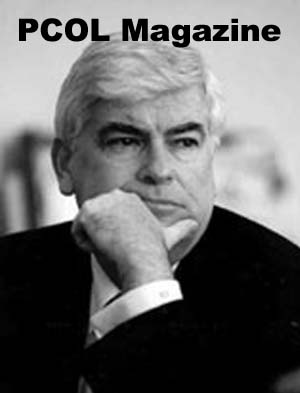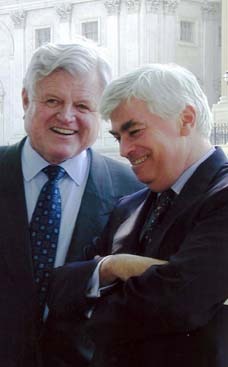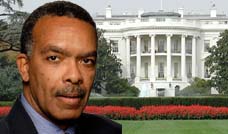
Not later than 90 days after the date of the enactment of this Act, the Director of the Peace Corps shall complete the assessment described in paragraph (2) to determine how best-- (A) to strengthen the management capabilities and program effectiveness of the Peace Corps; (B) to expand opportunities for Peace Corps volunteers; and (C) to increase the size of the Peace Corps. (2) ASSESSMENT DESCRIBED- The assessment described in this paragraph means an assessment of-- (A) how the purpose of the Peace Corps declared under section 2(a) of the Peace Corps Act (22 U.S.C. 2501(a)) translates into tangible strategic plans for the Peace Corps; (B) the distribution of Peace Corps volunteers in country programs, including how and why volunteers are assigned to various countries and jurisdictions of within countries; (C) the most effective and efficient methods of improving support for the Peace Corps' goal of promoting a better understanding of other peoples on the part of the people of the United States; (D) the prospects for partnerships with international and host country nongovernmental organizations and other entities to achieve the goals of the Peace Corps through development projects; (E) the adequacy of the current program model of the Peace Corps and the feasibility of program models such as the Peace Corps Response Program; (F) the effectiveness and efficiency of volunteer recruitment strategies, methods, and resource allocations used by the Peace Corps; (G) the effectiveness of the Peace Corps in recruiting ethnically, socio-economically, and geographically diverse volunteers with wide-ranging skills and interests; (H) the skills and interests of current Peace Corps volunteers; (I) options for diversification of the skills and interests of Peace Corps volunteers, including volunteers with skills and interests that relate to public health, information technology, urban planning, social services, communications, and community organizing; (J) the Peace Corps volunteer training programs; (K) the options available to volunteers to suspend payment of student loans while serving in the Peace Corps; (L) the medical care received by volunteers while serving in the Peace Corps; (M) the procedures of the Peace Corps for mandatory medical separation of volunteers serving in the Peace Corps; (N) the medical screening process for volunteers entering service in the Peace Corps, including-- (i) the cost to the Peace Corps of providing full reimbursement for medical tests under taken by volunteers applying for or entering service in the Peace Corps; (ii) expanded information for applicants including potentially disqualifying medical conditions; and (iii) the cost of extending the medical care provided by the Peace Corps to volunteers serving in the Peace Corps to include the 5-month period beginning on the date on which a volunteer completes service in the Peace Corps; (O) the causes of the early termination of service in the Peace Corps, using the cohort and other statistically appropriate methods and the reasons cited by volunteers terminating their service in the Peace Corps early; (P) how the Peace Corps can utilize information technology to improve-- (i) program efficiency, effectiveness, and coordination; and (ii) communication among volunteers; (Q) mechanisms for soliciting the views of volunteers serving in the Peace Corps, on a confidential basis, regarding-- (i) the support provided to such volunteers by senior staff of the Peace Corps; and (ii) the operations of the Peace Corps, including-- (I) staffing decisions; (II) site selection; (III) language training; (IV) country programs; and (V) dialogue with host country partners and ministries; and (R) mechanisms for incorporating the views solicited in subparagraph (Q) into programming and management decisions of the Peace Corps.
Text of the "Peace Corps Improvement and Expansion Act of 2009"
S 1382 IS
111th CONGRESS
1st Session
S. 1382
To improve and expand the Peace Corps for the 21st century, and for other purposes.
IN THE SENATE OF THE UNITED STATES
June 25, 2009
Mr. DODD introduced the following bill; which was read twice and referred to the Committee on Foreign Relations
A BILL
To improve and expand the Peace Corps for the 21st century, and for other purposes.
Be it enacted by the Senate and House of Representatives of the United States of America in Congress assembled,
SECTION 1. SHORT TITLE.
This Act may be cited as the `Peace Corps Improvement and Expansion Act of 2009'.
SEC. 2. FINDINGS.
Congress makes the following findings:
(1) Firmly established beliefs of the Peace Corps include the following:
(A) The act of volunteering has inherent value.
(B) The foreign policy goals of the United States are advanced by--
(i) contributing to the reduction of poverty; and
(ii) fostering international understanding.
(2) More than 195,000 volunteers have ably served in the Peace Corps in 139 countries by--
(A) working towards economic and social development; and
(B) promoting a better understanding of--
(i) the people of the United States on the part of the peoples served; and
(ii) other peoples on the part of the people of the United States.
(3) Today, the importance and necessity is greater than ever for the Peace Corps--
(A) to promote global economic and social development;
(B) to promote understanding and friendship; and
(C) to foster collaboration with international nongovernmental organizations.
(4) Since 1961, a bi-partisan succession of Presidents and Congresses have endorsed the expansion of the Peace Corps in order--
(A) to meet requests from countries to increase the size of the Peace Corps programs in their countries;
(B) to initiate Peace Corps programs in countries where the Peace Corps does not currently operate;
(C) to provide more opportunities for the people of the United States to engage in volunteer service abroad; and
(D) to renew dormant Peace Corps programs.
(5) The purpose of the Peace Corps, as declared by section 2(a) of the Peace Corps Act (22 U.S.C. 2501), is to promote world peace and friendship by helping--
(A) the people of interested countries in meeting their needs for trained men and women, particularly in meeting the basic needs of those living in the poorest areas of such countries;
(B) to promote a better understanding of people of the United States on the part of the peoples served; and
(C) to promote a better understanding of other peoples on the part of the people of the United States.
(6) As the Peace Corps reaches its 50th anniversary in 2010, a new forward-looking strategy should be developed to improve the effectiveness and efficiency of the Peace Corps in pursuing the goals described in subparagraphs (A) through (C) of paragraph (5) by analyzing and accounting for the strengths and weaknesses of the following:
(A) The program model of the Peace Corps.
(B) The current and planned distribution of Peace Corps volunteers throughout the world.
(C) Partnership opportunities and operations of the Peace Corps.
(D) Recruitment and management practices of the Peace Corps with respect to the diversity of Peace Corps volunteers and staff.
SEC. 3. ASSESSMENT AND STRATEGIC PLAN FOR IMPROVING AND EXPANDING PEACE CORPS.
(a) Assessment-
(1) IN GENERAL- Not later than 90 days after the date of the enactment of this Act, the Director of the Peace Corps shall complete the assessment described in paragraph (2) to determine how best--
(A) to strengthen the management capabilities and program effectiveness of the Peace Corps;
(B) to expand opportunities for Peace Corps volunteers; and
(C) to increase the size of the Peace Corps.
(2) ASSESSMENT DESCRIBED- The assessment described in this paragraph means an assessment of--
(A) how the purpose of the Peace Corps declared under section 2(a) of the Peace Corps Act (22 U.S.C. 2501(a)) translates into tangible strategic plans for the Peace Corps;
(B) the distribution of Peace Corps volunteers in country programs, including how and why volunteers are assigned to various countries and jurisdictions of within countries;
(C) the most effective and efficient methods of improving support for the Peace Corps' goal of promoting a better understanding of other peoples on the part of the people of the United States;
(D) the prospects for partnerships with international and host country nongovernmental organizations and other entities to achieve the goals of the Peace Corps through development projects;
(E) the adequacy of the current program model of the Peace Corps and the feasibility of program models such as the Peace Corps Response Program;
(F) the effectiveness and efficiency of volunteer recruitment strategies, methods, and resource allocations used by the Peace Corps;
(G) the effectiveness of the Peace Corps in recruiting ethnically, socio-economically, and geographically diverse volunteers with wide-ranging skills and interests;
(H) the skills and interests of current Peace Corps volunteers;
(I) options for diversification of the skills and interests of Peace Corps volunteers, including volunteers with skills and interests that relate to public health, information technology, urban planning, social services, communications, and community organizing;
(J) the Peace Corps volunteer training programs;
(K) the options available to volunteers to suspend payment of student loans while serving in the Peace Corps;
(L) the medical care received by volunteers while serving in the Peace Corps;
(M) the procedures of the Peace Corps for mandatory medical separation of volunteers serving in the Peace Corps;
(N) the medical screening process for volunteers entering service in the Peace Corps, including--
(i) the cost to the Peace Corps of providing full reimbursement for medical tests under taken by volunteers applying for or entering service in the Peace Corps;
(ii) expanded information for applicants including potentially disqualifying medical conditions; and
(iii) the cost of extending the medical care provided by the Peace Corps to volunteers serving in the Peace Corps to include the 5-month period beginning on the date on which a volunteer completes service in the Peace Corps;
(O) the causes of the early termination of service in the Peace Corps, using the cohort and other statistically appropriate methods and the reasons cited by volunteers terminating their service in the Peace Corps early;
(P) how the Peace Corps can utilize information technology to improve--
(i) program efficiency, effectiveness, and coordination; and
(ii) communication among volunteers;
(Q) mechanisms for soliciting the views of volunteers serving in the Peace Corps, on a confidential basis, regarding--
(i) the support provided to such volunteers by senior staff of the Peace Corps; and
(ii) the operations of the Peace Corps, including--
(I) staffing decisions;
(II) site selection;
(III) language training;
(IV) country programs; and
(V) dialogue with host country partners and ministries; and
(R) mechanisms for incorporating the views solicited in subparagraph (Q) into programming and management decisions of the Peace Corps.
(3) METHOD- The assessment shall--
(A) be built on a review of past experiences and studies; and
(B) draw on the knowledge of--
(i) current Peace Corps volunteers and staff, at all levels of seniority;
(ii) returned Peace Corps volunteers and staff; and
(iii) host country nationals and officials who have worked closely with Peace Corps volunteers.
(b) Strategic Plan-
(1) IN GENERAL- Not later than 180 days after the date of the enactment of this Act, the Director of the Peace Corps shall develop, based on the assessment required under subsection (a), a strategic plan for the Peace Corps that--
(A) encompasses the findings of the Director with respect to the assessment required under subsection (a); and
(B) includes the matters described in paragraph (2).
(2) MATTERS DESCRIBED- The matters described in this paragraph include the following:
(A) 1-year and 5-year goals and benchmarks for the Peace Corps that address--
(i) each matter included in the assessment required under subsection (a); and
(ii) such other matters as the Director considers appropriate.
(B) Strategies for--
(i) distributing volunteers to countries in which they have maximum value-added for the host country, for the United States, and for the volunteers themselves;
(ii) identifying countries with strategic value to Peace Corps goals, currently not served or dormant, and proposals for starting new country programs or re-activating dormant programs, as well as countries with less strategic relevance to Peace Corps goals, including proposals for reducing or closing such country programs;
(iii) balancing the Peace Corps' independence with its need to remain relevant to broader United States foreign goals; and
(iv) ensuring that Peace Corps operations and goals are not adversely affected in situations where the bi-lateral relationship between the host country and the United States is problematic.
(c) Report-
(1) IN GENERAL- Not later than 180 days after the date of the enactment of this Act, the Director of the Peace Corps shall submit to the appropriate congressional committees a report that includes--
(A) the findings of the Director with respect to the assessment required under subsection (a); and
(B) the strategic plan developed under subsection (b).
(2) APPROPRIATE CONGRESSIONAL COMMITTEES DEFINED- In this subsection, the term `appropriate congressional committees' means--
(A) the Committee on Foreign Relations and the Committee on Appropriations of the Senate; and
(B) the Committee on Foreign Affairs and the Committee on Appropriations of the House of Representatives.
SEC. 4. LIMITATION ON NUMBER OF PRESIDENTIAL APPOINTMENTS UNDER PEACE CORPS ACT.
The Peace Corps Act (22 U.S.C. 2501 et seq.) is amended by inserting after section 19 the following:
`SEC. 20. LIMITATION ON NUMBER OF POLITICAL APPOINTMENTS.
`Except for appointments made under section 12, the President may not make more than 15 concurrent appointments under this Act.'.
SEC. 5. AUTHORIZATION OF APPROPRIATIONS.
Section 3(b) of the Peace Corps Act (22 U.S.C. 2502(b)) is amended to read as follows:
`(b) Authorization of Appropriations-
`(1) IN GENERAL- There are authorized to be appropriated to carry out the purposes of this Act--
`(A) $450,000,000 for fiscal year 2010;
`(B) $575,000,000 for fiscal year 2011; and
`(C) $700,000,000 for fiscal year 2012.
`(2) AVAILABILITY OF FUNDS- Amounts authorized to be appropriated under paragraph (1) for a fiscal year are authorized to remain available for that fiscal year and the subsequent fiscal year.'.












